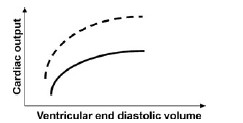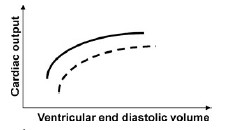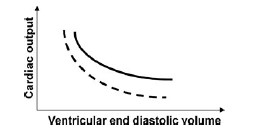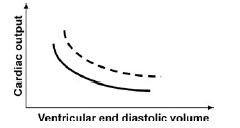Performance Meter
0%
QUESTION ID:1
Which one of the following conditions favors maximum expression of lac operon genes in E. coli?
QUESTION ID:2
QUESTION ID:3
QUESTION ID:4
Digestion of an immunoglobulin G (lgG) molecule with pepsin will NOT
QUESTION ID:5
QUESTION ID:6
QUESTION ID:7
Which one of the following statements about control of microbial growth is NOT correct?
QUESTION ID:8
An example of a differential and selective medium in which colonies of Gram-negative bacteria produce large amounts of acidic products and appear green with a metallic sheen is
QUESTION ID:9
QUESTION ID:10
A bacterial culture containing 3 x 105 live cells was exposed to a newly developed sterilizing agent. After 30 minutes of exposure, 3 live cells remained in culture. The decimal reduction time (in minutes) for the new agent is
QUESTION ID:11
QUESTION ID:12
QUESTION ID:13
QUESTION ID:14
Which ONE of following leucocytes is phagocytic and has clear cytoplasm?
QUESTION ID:15
QUESTION ID:16
Which ONE of the following is NOT a site for in situ conservation?
QUESTION ID:17
Which ONE of the following is the precursor molecule for corticosteroids?
QUESTION ID:18
Transitional epithelia is found in which ONE of the following organs?
QUESTION ID:19
Visual signal transduction cascade is activated by rhodopsin and involves degradation rather than synthesis of which ONE of the following second messenger molecules?
QUESTION ID:20
The genomes of both human and Drosophila code for an amylase that acts on the same substrate. However, the sequence of nucleotides in the genes encoding the two is dissimilar. This is an example of which ONE of the following types of evolution?
QUESTION ID:21
"Round dance" is performed by forager bees to indicate the distance between a food source and their colony. Which ONE of the following best represents this distance?
QUESTION ID:22
Which ONE of the following phyla have choanocytes?
QUESTION ID:23
QUESTION ID:24
QUESTION ID:25
Match the following subcellular organelles in Column I with associated functions in Column II
QUESTION ID:26
QUESTION ID:27
QUESTION ID:28
QUESTION ID:29




QUESTION ID:30
QUESTION ID:31
QUESTION ID:32
QUESTION ID:33
QUESTION ID:34
The enzyme majorly involved in postmortem degradation of muscle proteins is
QUESTION ID:35
Which of the following is the correct pair of essential fatty acids?
QUESTION ID:36
Nisin A is produced by
QUESTION ID:37
Which of the following bacteria will stain purple color after Gram staining?
QUESTION ID:38
The enzyme system used for removal of glucose from egg white prior to its drying consists of
QUESTION ID:39
The INCORRECT pair of food borne illness and its causative microorganism is
QUESTION ID:40
Which of the following is commonly used as a preservative in the tomato sauce?
QUESTION ID:41
A fluid with flow behaviour index less than one (n < I) is
QUESTION ID:42
The velocity of 2.2 gm diameter fat particles inside a centrifuge, running at 6000 rpm and 20 °C, is 0.25 mm s-1. The velocity of 1.5 .tm diameter fat particles inside the same centrifuge running at 7500 rpm and same temperature (round off to 2 decimal places) will be mm s-1
QUESTION ID:43
The initial population of a bacterial strain increases from 1x104 cells per mL to 1x106 cells per mL in 120 minutes. The generation time for this strain (round off to 2 decimal places) is minutes.
QUESTION ID:44
QUESTION ID:45
QUESTION ID:46
QUESTION ID:47
QUESTION ID:48
QUESTION ID:49
QUESTION ID:50
QUESTION ID:51
QUESTION ID:52
QUESTION ID:53
An orange juice flowing at 0.80 kg s' enters a counter current double pipe heat exchanger at 20 °C and leaves at 72 °C. Inlet and outlet temperatures of the hot water used as heating medium in the exchanger are 81 °C and 74 °C, respectively. The specific heat of the orange juice is 3.74 kJ kg-1 K-1and overall heat transfer coefficient is 492 W m 2 10. The heat transfer surface area (round off to 2 decimal places) will be m2.
 TLS Online
TLS Online